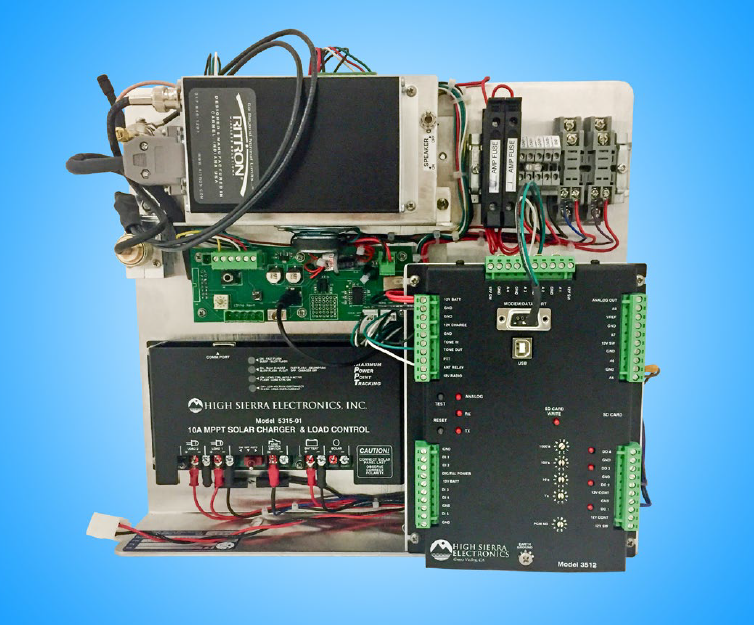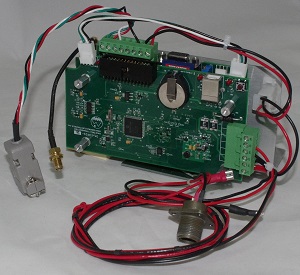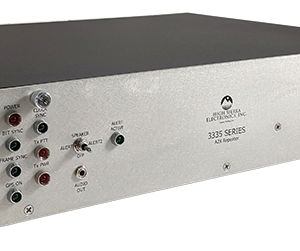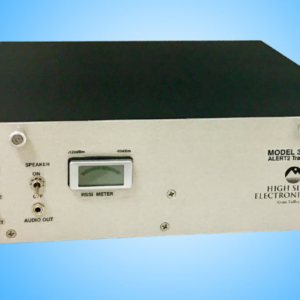The Model 3582 Series is a two-way ALERT2 Controller Assembly ideal for use in High Water Detection Systems (HWDS) and other inclement weather detection systems.
This 4-channel system can be used in either a “Master-and-Remotes” configuration for high water flooding, fog, high wind and snow/ice detection systems for roadway and public access areas as well as for dam and hydro-related pump stations. It can also be applied as a remotely controlled station to activate remote solar-powered cameras, pumps or public warning devices such as beacons, message signs, gates and sirens controlled directly by remote commands initiated by OneRain Contrail® software (Contrail Base Station and Contrail Server).
There are typically one or more command Controllers at a high-water stream crossing: one at the Master gauging station and the others at the Remote solar-powered flashing beacon stations. The Master stations support up to three water level sensors and may have a rain gauge or other weather sensors for monitoring atmospheric conditions. The Master station sends timed reports, event-generated reports, and command-generated status reports. These reports can either pass through an optional Repeater or are received directly at the central site Base Station. The Remote stations have a controlled device (e.g., a warning sign with flashing beacons) and will send timed reports and command generated response reports to its Master controller and the Base Station. Remote stations can also be equipped with optional Barrier Gates.



